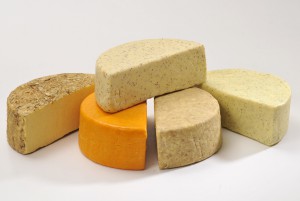10th March 2014 Warsaw, Poland
Say Cheese – Say Stilton
Piesek P is on the lookout for GREAT British Cheese in Poland – as he finds it he’ll let you know – just smile,
Say Cheese at the Bell in famous Stilton
Many people would say that Stilton is the King of British cheeses. It holds proud place at the Christmas lunch table or can be seen at the GREAT British Sunday lunch. It should not be eaten to early. Treat the sell by date with a pinch of salt. Pure creamy, deep, mellow and robust – keep it in the fridge but note it likes to stand in the dining room for a few hours before eating. Not overtly smelly unlike some of its French mates.
In the 18th century the town of Stilton was a major staging post on the famous York to London run. The pub in Stilton, the now famous Bell, started to serve a curious blue veined cheese which was hand made in the nearby town of Melton Mowbray in Leicestershire. The elegant, robust cheese was so tasty that very soon it was making its way to the fine tables of London in its thousands and the rest is history.
In its early days it was made on small farms but soon the Stilton makers teamed up and in 1910 the Stilton Makers Association was formed. A trademark was registered ensuring the cheese could only be made in the counties of Nottinghamshire, Derbyshire and Leicestershire.
The trick in making a GREAT stilton is the time which is taken to mature the curds – longer than most cheeses. This adds to the beautiful creamy texture of the cheese. At six weeks each cheese is placed on a special wooden stand and pierced with 18-20 long, narrow stainless steel needles to allow air to enter the body of the cheese. A serious characteristic of the cheese is the spiraling blue lines in the cheese which shatter the elegant, creamy texture adding to its famous look and superb, rich and unique taste.

GREAT British Stilton has a deep, mellow, spicy taste. It should not be eaten young. Loves to be eaten with oat biscuits and can on occasion like pickle. Over the years has been accompanied by port. However it should not be a too sweet or rich port rather a sweet crispy one. Traditionally Port was poured into the stilton – this was to kill any insects which may have entered the cheese while ripening – not necessary today, just keep the cheese in a fridge. Goes well with light, dancy wine. White not red.
Say Cheese would encourage you to start your relationship with Stilton on its own – discrete, get to know each other and all that. However GREAT British Stilton is a superb cooking ingredient. Famous for partnering up with Broccoli in soup or is a GREAT crown to a well matured and slow-cooked filet steak. If you are a vegetarian Blue Stilton is an excellent accompaniment to a sous vide veg bake or delicately crumbles on a crisp green salad.
Say Cheese – Say Blue Stilton – The King of British Cheeses – Taste some for yourself today